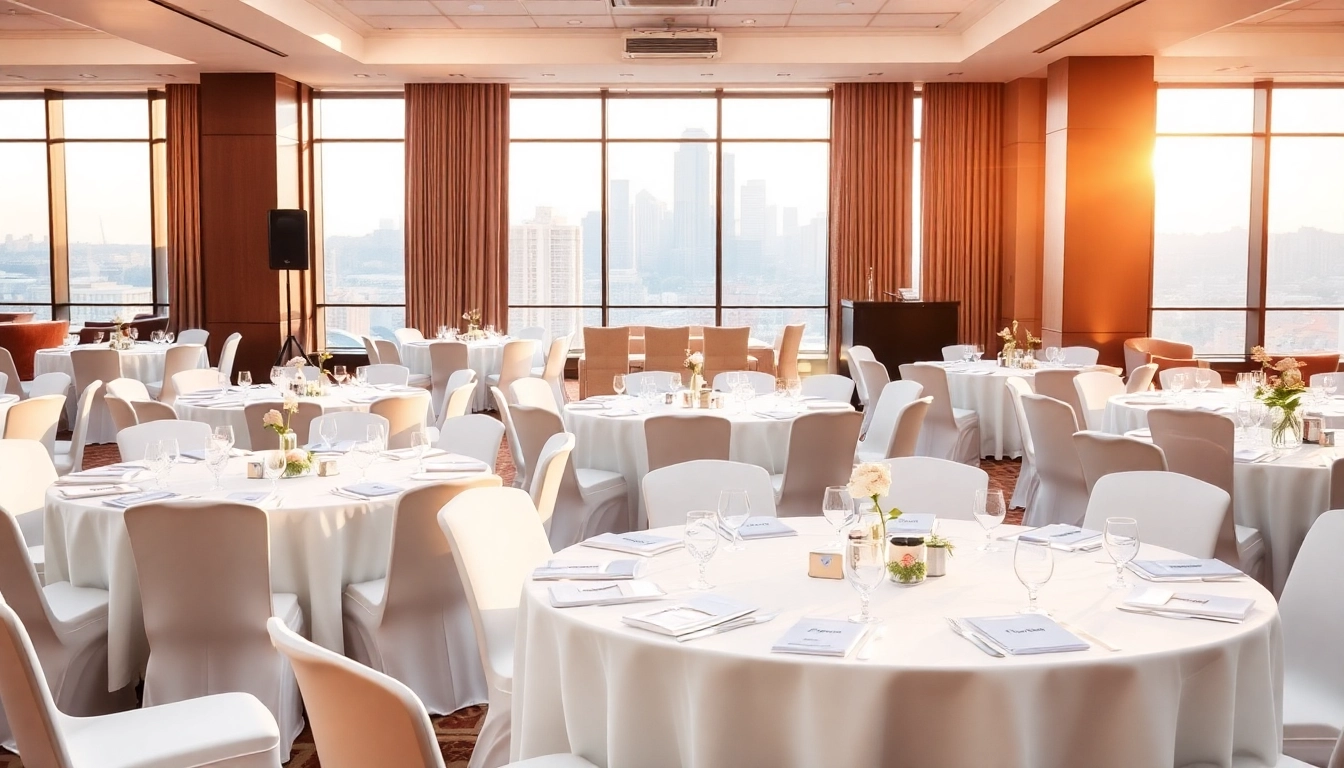
Understanding Event Space Types
When planning an event, whether it’s a corporate meeting, a wedding, or a special celebration, selecting the right event space is crucial. An appropriate venue sets the ambiance, accommodates your guests’ needs, and aligns with the event’s purpose. To navigate the myriad choices available, it’s essential to understand the diversified types of event spaces that exist.
Key Features of Different Event Spaces
Every event space boasts unique characteristics tailored to various types of gatherings. Here are some common types:
- Banquet Halls: Often embellished and spacious, banquet halls are ideal for large gatherings such as weddings or corporate functions, offering essential amenities like kitchen access and audiovisual equipment.
- Conference Centers: Designed specifically for business events, these locations include meeting rooms equipped with state-of-the-art technology and can accommodate workshops, seminars, or large corporate meetings.
- Outdoor Venues: Parks, gardens, or terraces provide a scenic backdrop suitable for casual gatherings or ceremonies, offering flexibility in layout and the possibility for creative decorations.
- Art Galleries or Museums: For a more cultured atmosphere, hosting an event in an art gallery or museum can lend sophistication, swapping traditional aesthetics for inspiring exhibits.
- Lofts and Warehouses: These unique spaces often offer an urban, industrial vibe. They can be customized more easily, accommodating various setups from intimate weddings to large parties.
Choosing Between Indoor and Outdoor Event Space
The decision to host an event indoors or outdoors heavily relies on the event type, guest preferences, and anticipated weather conditions. Indoor venues offer climate control, privacy, and pre-existing facilities, making them predictable and versatile for any season. Conversely, outdoor spaces introduce natural beauty and open air, which can create a relaxed environment; however, they also carry risks related to weather, requiring contingency plans.
Event Space Layout Options
Understanding the layout of your chosen event space can greatly influence guest interaction and overall aesthetics. Common layouts include:
- Theater Style: Ideal for presentations or performances where audience visibility is paramount. Chairs are arranged in rows facing the stage.
- Classroom Style: A layout suited for educational events; tables are placed in rows with chairs, allowing attendees to take notes easily.
- Banquet Style: Round tables encourage conversation and social interaction, making it perfect for meals and celebrations.
- U-shape: Great for discussions or meetings that require an open dialogue; chairs face inward, creating a circle or U-shape for interaction.
Factors to Consider When Selecting an Event Space
Choosing an event space encompasses multiple elements beyond aesthetics. It’s vital to evaluate the following:
Capacity and Space Requirements
Understanding the number of attendees is fundamental in selecting an appropriate space. A venue should comfortably accommodate your guests, allowing for movement, dining, and networking. Exceeding capacity can lead to a cramped feel, while an underused space may detract from the event’s ambiance. Always confirm the venue’s maximum capacity, keeping in mind the arrangement you intend to use.
Location Accessibility
The accessibility of the venue is crucial. It should be easy for guests to reach, preferably with ample parking, public transportation options, and, if needed, accessibility features for individuals with disabilities. A centrally-located venue might also encourage better attendance as it’s often convenient for most attendees.
Budget Considerations for Event Space
It’s essential to establish a budget early in the planning process. Consider all costs associated with securing the event space, including rental fees, catering options, equipment rental, and service charges. Balancing budget constraints with the right environment will ensure a successful event without financial strain.
How to Optimize Your Event Space for Different Events
Different events demand tailored approaches for utilization of the space. Here are strategies for optimizing an event space based on the occasion:
Configuring the Event Space for Corporate Meetings
Corporate meetings often focus on productivity and collaboration. Thus, setting up the space to facilitate interaction is crucial. Consider using circular seating arrangements, providing necessary technology like projectors, and ensuring a reliable Wi-Fi connection. Additionally, having breakout rooms for smaller groups encourages deeper discussions.
Transforming an Event Space for Celebrations
Transforming a venue for celebrations involves creativity and attention to detail. Utilize decorations, lighting, and furniture to create a warm atmosphere. For instance, themed decor combined with a particular color scheme can evoke a festive mood—such as fairy lights for a winter wonderland or floral decorations for a spring wedding. An area for mingling, such as a lounge, can also enhance guest experience.
Creating Unique Themes in Your Event Space
A creative approach to themes can turn an ordinary event space into an extraordinary experience. Engage guests with immersive themes, whether it be a retro ball, a masquerade party, or a cultural festival. Consider aligning all elements, from food to entertainment, ensuring consistency throughout the event to create a memorable experience.
Promoting Your Event Space Effectively
For venue owners, effective promotion of your event space is essential to attract diverse clients. Here are strategies for successful marketing:
Utilizing Online Platforms for Event Space Marketing
With online visibility paramount in today’s market, utilizing social media and dedicated event venue platforms can significantly enhance reach. Create an engaging presence on social media platforms with high-quality images and virtual tours of your space, while leveraging listing sites to showcase unique attributes and rental information effectively.
Crafting Engaging Content for Event Space Advertising
Content marketing plays a central role in attracting potential clients. Maintain an active blog that discusses event planning tips, testimonials from past guests, or trends in event spaces. Such content builds credibility and enhances visibility online, targeting clients actively searching for venues.
Building Partnerships to Increase Visibility of Your Event Space
Establishing partnerships with event planners, caterers, entertainment companies, and suppliers can amplify your reach. Networking within the local business community ensures that your venue is top-of-mind when consultations take place, subsequently increasing bookings through referrals.
Measuring Success After an Event in Your Event Space
Measuring the success of an event held in your event space is essential for continuous improvement and strategizing future events. Here are ways to evaluate performance:
Gathering Feedback from Attendees
One of the most enlightening ways to gauge an event’s success is through attendee feedback. Utilize post-event surveys to gain insights on various aspects, including venue suitability, catering quality, and overall guest experience. You can analyze both qualitative and quantitative feedback to identify areas for improvement.
Analyzing Traffic and Engagement Metrics
For venues actively promoting online, analyzing traffic to your website or social media engagement can reveal much about your marketing strategy’s effectiveness. Measure key performance indicators (KPIs) such as bounce rates, page views, and engagement rates on posts associated with specific events.
Continuous Improvement for Your Event Space
Take insights from guest feedback and metrics to make necessary adjustments to the event space offerings and layout modifications. This iterative approach ensures that your venue continually evolves to meet client expectations and stand out in a competitive market.





